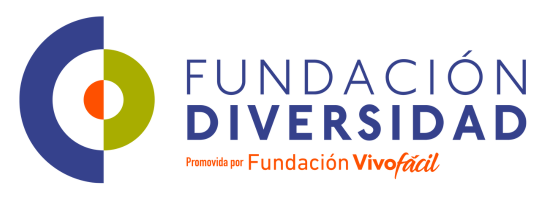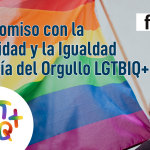International Diversity in Europe – A Spanish Perspective by Michael Stuber
Are leading International companies intensifying their D&I programmes and do they communicate more extensively or in a more detailed way about it? These are some of the key questions that a series of European studies has analysed over more than ten years. The latest results are presented with specific reference to the Spanish subsample included.
Diversity and Inclusion has sustained a prominent position in blue chip companies in Europe. This is a high level result from the latest analysis of Annual and CSR reports of 75 major European multinationals. 73 of 75 companies talk about Diversity in their Annual reports and 61 of 62 CSR reports describe the topic. “Prevalence rose continuously to this level, which leaves no doubt about the importance of D&I in Corporate Europe”, summarises Michael Stuber, D&I pioneer, who initiated and managed the studies starting in 2006. The research design includes analysis by industry and by region one of which combines Italy and Spain into a so-called convenient sample. In some respects, the ten companies in the Southern European cluster showed approaches that differ from the rest of Europe, other aspects were well-aligned.
At the time when the selection for the current analysis was made, the following five multinationals headquartered in Spain were included: Banco Bilbao Vizcaya Argentaria, Banco Santander, Iberdrola, Inditex and Telefonica. The research analysed the Corporate Reports for 2015, which were published in the course of 2016.
Low prevalence of D&I in Spanish/Italian Annual Reporting
73 of the 75 Annual Reports contained a total of 101 pages about D&I, which comes to an average of 1.4 pages per report. In the Southern European subsample, 9 of 10 Annual reports included a total of 4.5 pages on D&I. The average of 0.5 pages was the lowest in any sub-sample. However, the Spanish reports get to an average of 0.6 pages. Few reports include longer parts on D&I; actually only one report has a Diversity chapter (Telefonica: 1.75 pages) while the vast majority feature D&I in one paragraph or with up to one page. A closer look reveals that such results can be misleading if your analysis does not cover all relevant data.
D&I in CSR Reporting – a history of ups and downs
In the current analysis of CSR reports the Spanish-Italian cluster boasts the second highest prevalence of D&I. The complete sample of 61 reports includes a total of 147 pages on Diversity (2.4 on average) whereas the 8 Southern European reports include 28 pages (3.5 on average – only exceeded by the German subsample with 4.2). Three Spanish CSR reports (Banco Santander, Iberdrola and Telefonica) dedicate 1.5 or more pages to D&I (which is the case for a good half of the total sample). While it may seem natural to some that CSR reports contain more extensive D&I content than Annual Reports, this was in fact not the case for the previous Stoxx®50Europe analysis (2013/14) of the companies included in the Stoxx®50 Europe index.
Paradigms & Dimensions: Comparing the understanding of Diversity Management
Making the most of differences can be discussed under a variety of headlines. ‘Diversity & Inclusion’ has emerged, over the years, as the most commonly used umbrella phrase. Analysis of the headlines of the respective chapters reveal differences between the two types of reports including in the Southern European subsample. In Annual Reports, it is common to use generic (mostly HR) terminologies to introduce D&I while a good half is using a combination of Diversity and another term (mostly Inclusion) – the latter is true for both types of reports. In CSR reports, however, it is more common that the headlines refer to Equal Opportunities.
Does that mean that companies follow the strong political focus on and preference for gender? Yes and no. Gender continues to be mentioned explicitly far more often than other dimensions (Internationality and Disability ranking second and third). On the other side, the comprehensiveness of D&I communication, measured by the number of dimensions explicitly mentioned, has been growing steadily over many years. Now, a good half of reports (in either category or subsample) mention five or more dimensions and just below one quarter call out seven or more topics. In the CSR reports of the latter group, German and Southern European companies are overrepresented, three Spanish CSR reports mention even eight or more dimensions. “With their inclusive communication, large multinationals are telling the political leaders that – from a business perspective – D&I has to be much more than gender”, EMEA Diversity expert, Michael Stuber, comments the results.
Influence of Gender Quota
Responding to political expectations, the EuroStoxx®50 analysis 2011/12 found an emerging gender focus in communication and the following Stoxx®50 study (2013/14) reported 82% of companies including diversity data (workforce or management) in their Corporate Reports. Hence, and in the light of increasing regulation, it comes as no surprise that 57 of 75 Annual Reports contain data on the demographic composition of Boards. Some less (43) report diversity figures for management levels and just under half (33) disclose workforce diversity data. 13 Annual reports did not contain any such numbers while all Spanish companies report some data. Evaluating Annual and CSR reports, almost all Spanish multinationals report gender and other data including internationality, age, disability or work formats.
From commitment to programmes and practices to measurable success
From the beginning, the research design included an analysis of the nature of the D&I information communicated in Corporate Reports: Do companies state their policies and commitments (only) or do they describe concrete programmes and practices they put in place? Or do they even specify achievements, progress or other forms of success? In the Annual Reports, commitments and policy statements were more frequent than activities or successes whereas in CSR reports (and in the early Annual Report analysis) more companies spoke about their activities. Reporting successes or achievements is becoming more common as companies participate in ranking exercises or get certified in certain areas.
The current study found 198 programmes/activities mentioned in 43 Annual Reports, and 273 programmes/activities in 47 CSR reports. The Southern European subsample ranks last on activities in Annual Reports but second on activities in CSR reports. One of the five describes three of their programmes in the Annual Report and three of four CSR reports contain 22 activities. The analysis found a strong focus on programmes for women or work/life integration.
Across the 75 leading multinationals, development programmes form the largest category, followed by topic-specific programmes. Events have grown in numbers and education (training, workshops, eLearning) has even become a new category.
The D&I Journey in Europe
Like no other topic, D&I in Europe has gone through an impressive development over the past 20 years. Starting as an innovative niche concept, it has become an indispensable element for large corporations that face numerous organisational, business and HR complexities. Along with the growth of the D&I landscape, the array of frameworks, approaches and practices has become vast. The sheer amount of good practices has also led to more an increase in me-too activities – and even to some routine and hence fatigue. In some regions, a strong CSR linkage caused more charitable, social or volunteering programmes that are often seen as diluting the clear – and admittedly hard – strategic business case based approach. Also, the differences across industries are still remarkable. ITC and Pharma tend to be more actively communicating D&I, the traditional Industrial Corporations are mostly found towards the lower ends of the spectra. For Energy and Finance, findings were mixed while for Consumer/Retail/Food – a large sector with a very strong business rationale for D&I – few above-average results were found.
Overall, it has become apparent that companies do their best – and sometimes struggle – to integrate external expectations (e.g. from politics or candidates) and internal needs (e.g. for a strong D&I contribution to the business agenda or improving the employee experience) in a context where personal preferences and beliefs of key stakeholders keep on influencing the D&I strategy. In addition, the continuing journey creates more complex needs to work with quite different audiences internally. All of this may not be an easy task when D&I is considered a part of employer branding or talent development…
How to re-energise your D&I agenda …
https://fundaciondiversidad.com/too-much-of-the-same-thing/
D&I in the EuroZone Top50:
http://en.diversitymine.eu/eurozone-blue-chips-increase-volume-of-di-communication-with-a-gender-focus/
D&I reporting of Europe’s Top 50 corporations:
http://en.diversitymine.eu/new-empirical-data-about-di-in-european-blue-chip-corporations/





Un comentario
Buenos días Gerard,
Para incluirle dentro de las candidaturas de nuestro departamento de RR.HH necesitamos que nos envíe su CV al email [email protected] o [email protected]
Cualquier duda le ruego nos llame al 912750555
Gracias
Un saludo cordial
Los comentarios están cerrados.